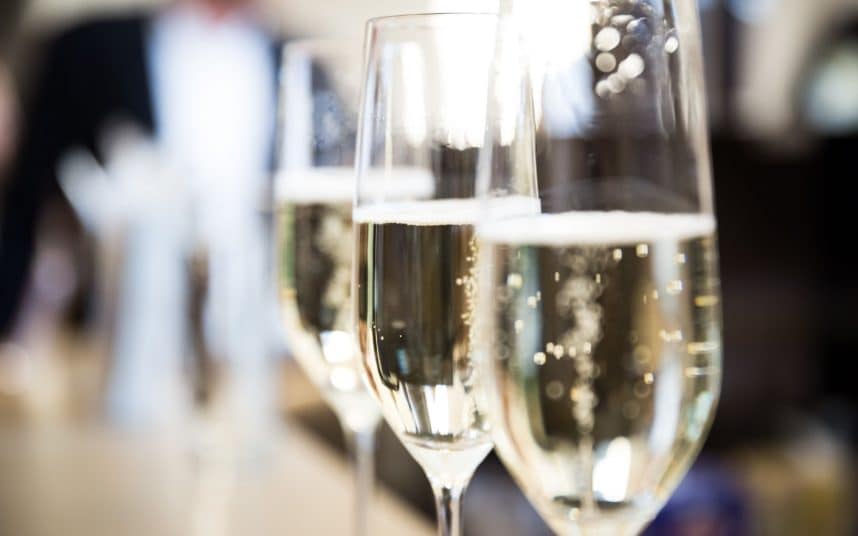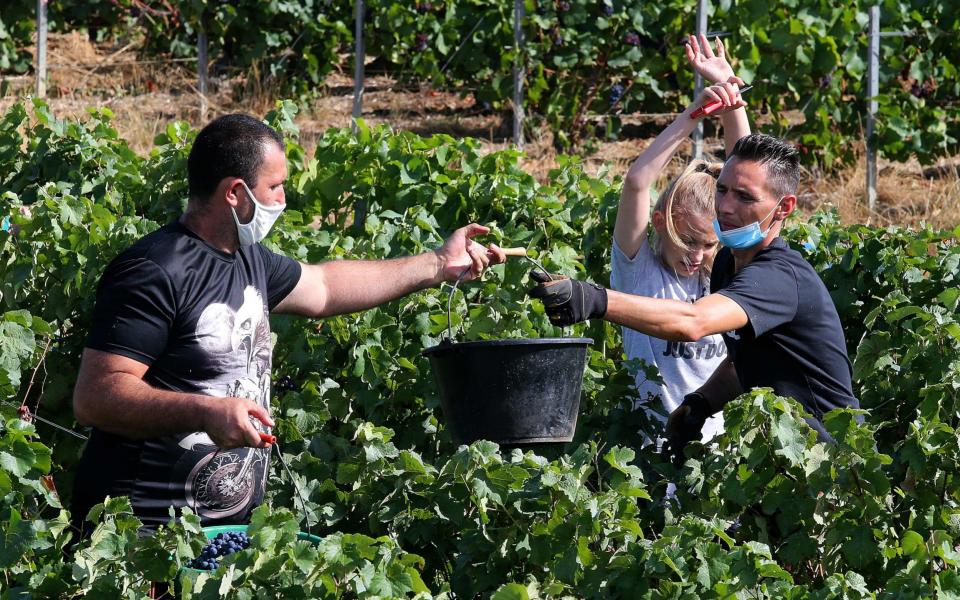As climate change causes the earliest-ever grape harvest, is traditional champagne losing its fizz?

Champagne experienced its earliest ever harvest this year. Grape-picking officially began on 17th August – the date authorized by the Comité Champagne – although some growers in the south of the region reportedly started picking on the 13 August, breaking the previous record by four days.
The precocious crop follows a particularly hot, dry season but it is also part of a more recent pattern that has seen ripening times move inexorably forward this century.
Where will this take us? Is the climate crisis going to change the taste of the champagne in our glass? Will it even be possible to produce champagne, or at least champagne as we know it, a few decades hence?
“Harvests starting in August are almost becoming a habit. [Before 2003] there was only one, in 1822. Since 2003 it’s happened seven times now,” said Thibaut Le Mailloux, Director of Communications, Comité Champagne in a webinar on Tuesday [22nd Sept].
Besides that freak year in the early nineteenth century, picking has started in August in Champagne in 2003, 2007, 2011, 2015, 2017, 2018 and now 2020. Meanwhile the average temperature in the region has risen by a not insignificant 1.1˚c over the last 30 years. The impact on the wines of climate change is already being felt.

“In Champagne we used to have very high acidity but we struggled with sugar, we struggled with alcohol, we struggled with maturity. Our generation, we have plenty of alcohol, plenty of sugar, plenty of maturity but freshness is an issue. The acidity levels continue to drop and the pH levels continue to rise,” said Christian Holthausen, export director at Champagne AR Lenoble.
Holthausen also talked about the way in which this had changed the use of reserve wines in champagne. Reserve wines are stocks of wines from previous vintages that are used in a non-vintage champagne to create the best possible blend.
“The world has gone upside down,” said Holthausen. “In my parents’ generation we used to need reserve wines to give richness. We started back in 2010 keeping a significant proportion of our reserve wines in magnums to try to keep them fresh.”
The rise in temperature has had some positive effects. Thibaut Le Mailloux said, “We have more and more exceptional years from a raw material and taste quality perspective.” He also added that 'chapitalisation' – the practice of adding sugar to the fermenting must in order to increase alcohol levels – is now “close to zero” thanks to the increased ripeness of the grapes.
In the long and possibly even the middle term, however, the champenois are keenly aware that, without action, their survival could be under threat.
Like many other wine regions, Champagne has a multi-strand sustainability programme, which has already been running for 19 years. This has already made significant steps forward: the carbon footprint of each bottle of champagne has been reduced by 20% and the use of pesticides by 50%. There are targets to reduce CO2 consumption by 75% by 2050 and pesticide use to zero by 2025.

Most interesting of all, perhaps, is a 25-year programme to develop new grapes that will be better adapted to heat and drought and which might be used to make champagne in the future. The three main champagne grapes today are chardonnay, pinot noir and pinot meunier (another four varieties are used, but these occupy only 0.3% of the regional vineyard). At the National Institute for Agricultural Research in Colmar, Alsace, biologists have been developing grape varieties that are resistant to heat and drought.
“We are crossing these hybrids with chardonnay, pinot noir and pinot meunier and the goal is to obtain, after a process of selection over 25 years, four or five new grape varieties that will resist fungus, drought and disease but have the aromatic profile of chardonnay, pinot noir and meunier,” said Thibaut Le Mailloux. “We put a lot of hopes on this 25 year programme and we are roughly in the middle of the road. It starts with 400,000 seeds being germinated and by planting and selection, then tasting and selection, then winemaking and selection, we hope to end up with four to five new grape varieties.”
Le Mailloux said that one new variety had already been discarded, “it had too much of an aromatic profile, tasted a little too much of flowers, not like champagne.” He also said that the programme had developed another candidate that, “is extremely interesting because if you blend five-to-ten per cent with chardonnay you don’t see the difference.”

If it feels like sacrilege even to contemplate a champagne made from different grapes then you underestimate the commercial focus and determinedly progressive nature of the champagne industry.
“The goal is to keep the style and the uniqueness of the style of champagne that is linked to the terroir,” said Le Mailloux, “And part of the terroir is changing, the climate parameter so we are ready to change other parameters like the grape selection in order to keep the style of the wine which really is the goal.
"The rest are just parameters. So it is a future revolution in Champagne to make a champagne out of new grapes that we don’t know yet or maybe out of existing grapes but the blend would contain some percentage of new grapes allowing it to resist climate change.”
Sign up for the Telegraph Luxury newsletter for your weekly dose of exquisite taste and expert opinion.

 Yahoo News
Yahoo News 
